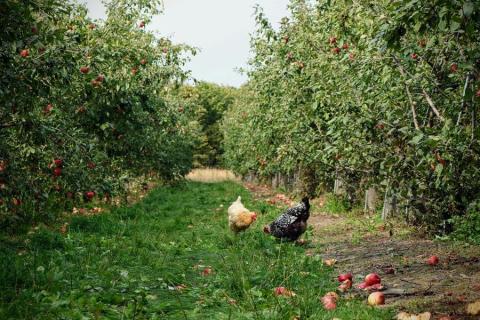Key report conclusions;
- Agroforestry can provide multiple benefits to agriculture: Even when considering futures with varying priorities (e.g. economic growth, sustainability, or system stability), agroforestry can aid each of these goals whilst potentially also achieving other benefits.
- With correct planning, agroforestry can improve farm yields, reduce the need for inputs, improve general sustainability of fields, and make them more resilient to fluctuating farmgate and input prices and extreme weather events.
- Agroforestry could provide economic outputs and sustainability, rather than a choice between them.
- However, there can be drawbacks of agroforestry, e.g. a potential decrease in arable yields and soil organic carbon of grasslands, if not managed and planned properly.
- “The right tree in right place, for the right reason” is critical. For agroforestry systems to provide benefits rather than costs to landowners/ farmers, the following should be considered; existing conditions, such as crop species, soil types, climate, as well as potential future conditions such as extreme weather events and future prices of timber and crops.
- Scenario analysis can offer a useful tool in the planning long-term agroforestry systems, to test designs and management practices under potential futures.
- We should consider what impacts potential futures may have on agroforestry systems that we are currently planting.
On the current state of agroforestry in the UK;
- Tree planting is a prominent government policy target for achieving net zero through carbon sequestration in the UK. Yet the UK has planted barely 12% of the 30,000 hectares of trees annually it should be by 2025.
- The question of where to plant large numbers of trees is complex: The best quality soil for tree growth is often also the most productive for agriculture, creating a conflict of interest between food production and sequestration.
- UK land area under agroforestry shrunk by 59% between 2015-2018, according to estimates from the EU’s Land Use and Land Cover survey. This suggests that although there is an increased interest in agroforestry from the academic, governmental, and industrial sectors, its overall utilisation seems to be declining.
- Agroforestry uptake in the UK is alarmingly low compared to the EU average of 8.8%
- Over 99% of UK land under agroforestry in 2012 in the UK was livestock agroforestry in silvopastoral systems.
Read the full report here.
Watch our webinar with farmer and agroforestry pioneer, Stephen Briggs.


